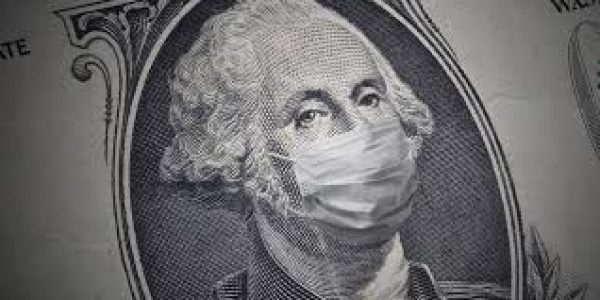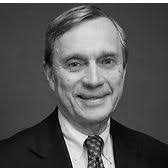Inflation Is All About Monetary Policy – And Other Stuff Too
by Michael Schmanske
Chief Investment Officer, AngelMD
“Inflation is always and everywhere a Monetary Phenomenon” – Milton Friedman
For those of you who are not fanboys of Monetary theorists…
Okay, just so you know, to a finance guy like me that kind of feels like saying you don’t like Superhero movies or the Lord of the Rings. I know those populations exist and may even be the majority, but my nerd heart just cannot comprehend it. In the case of Monetary Policy fandom that’s probably 99.999% of you. I forgive you.
Dr. Friedman, the Yoda of all modern economists, meant that if there is a ton of money in the system, it will chase products and prices will go up. The Federal reserve sets the total supply of money in our economy and does that via actual bond buying and selling and by setting the overnight interest rate. The media covers the interest rate policy with breathless fervor and most pundits follow their lead. Really good ones, or those with a sense of perspective, know that it is only one part (an important part to be sure) of the overall picture.
An equally important tool is the manipulation of the overall monetary supply. Purists would say it is the primary lever the Fed pulls. Following the Global Financial Crisis ( the “GFC”), central banks around the world began the great monetary experiment of zero interest rates and Quantitative Easing (QE). We are now witnessing what happens when we try and take that back. For some reason people get addicted to cheap money. Go figure. But it’s only cheap in the short term.
Quantitative Easing is the policy where the central bank (“The Fed”) printed money and bought bonds to put Dollars in investors hands and told them “Go find some other stuff to buy”. They bought corporate debt, then equities, then speculative companies, then bitcoin and yachts and gold plated faucets and NFT’s and cars and art and houses and … you get the idea. Pump money in at one end of the pipe and it sprays out all over the economy like a cartoon fire hose with no one holding it.
Quantitative easing and zero interest rate policy also led to the silly debate about Modern Monetary Theory (“MMT”), a policy argument that played out in the pages of the Wall Street Journal and the New York Times. Eminent Nobel Prize winning economists took positions on the topic that were seemingly supportable at the time but which they will be regretting in coming years like politicians regret those ill advised college party pictures. The key component of MMT was pretty simple. If demand for debt as a savings investment is sufficiently strong, and interest rates are low, then deficit spending has no limit. Politicians were enthralled like a cat following a laser pointer. Economists from Harvard are die-hard fanboys of MMT, whereas those from U Chicago maintain a modicum of restraint.
For the past 14 years, policy makers have been given carte blanche’ to cut taxes, increase spending and generally live like a bitcoin billionaire. One need only look at the decisions to further stimulate the economy in 2021, and even the attempts this past Spring to launch the Build Back Better stimulus plan, to see what happens when too much money chases too few assets or products. Note that it was not limited to cars, gasoline or pizza delivery. We clearly saw asset inflation in real estate. But it didn’t stop there. Excess dollars went to RobinHood accounts, juiced stock market valuations and fed the meme stock frenzy, SPAC’s, crypto currency nonsense, NFT’s and any variety of highly speculative assets.
Notice that no one is lamenting that BBB failed anymore – it is because even the most belligerent policy maker knows that it would have juiced inflation even further. But turning off the fiscal spigot also marked the top of the bubble in speculative assets. For the past year we have been witnessing the fallout as non-earning stocks have lost their shine, and investment dollars have sought homes in “Real Assets”. Check my last blog post about Value vs. Growth for a little more explanation of how these assets differ.
For now, let’s stay with policy. Arguments can be made about energy policy, fiscal stimulus and how other political decisions made over the past decade have led us to our current state. Those arguments have varying degrees of validity. I have my opinions, you may have yours. It is undeniable that fiscal policy has as much to do with our current inflation regime as the Fed’s poor decision to maintain loose monetary policy months after it was not needed. But 6 months here, 6 months there, and the long term impact is what we care about.
No matter what you believe, or how you set policy priorities, it is dumb that so much of that argument is predicated on which side of the aisle you stand. There is one overarching truth:
We have been living in the munificent glow of our central bank’s largess for the past 15 years. That is now coming to an end. And it has major implications for what to do next. I won’t present a massive problem, without giving you thoughtful options. Stay tuned.
by Michael Schmanske
Chief Investment Officer, AngelMD
“Inflation is always and everywhere a Monetary Phenomenon” – Milton Friedman
For those of you who are not fanboys of Monetary theorists…
Okay, just so you know, to a finance guy like me that kind of feels like saying you don’t like Superhero movies or the Lord of the Rings. I know those populations exist and may even be the majority, but my nerd heart just cannot comprehend it. In the case of Monetary Policy fandom that’s probably 99.999% of you. I forgive you.
Dr. Friedman, the Yoda of all modern economists, meant that if there is a ton of money in the system, it will chase products and prices will go up. The Federal reserve sets the total supply of money in our economy and does that via actual bond buying and selling and by setting the overnight interest rate. The media covers the interest rate policy with breathless fervor and most pundits follow their lead. Really good ones, or those with a sense of perspective, know that it is only one part (an important part to be sure) of the overall picture.
An equally important tool is the manipulation of the overall monetary supply. Purists would say it is the primary lever the Fed pulls. Following the Global Financial Crisis ( the “GFC”), central banks around the world began the great monetary experiment of zero interest rates and Quantitative Easing (QE). We are now witnessing what happens when we try and take that back. For some reason people get addicted to cheap money. Go figure. But it’s only cheap in the short term.
Quantitative Easing is the policy where the central bank (“The Fed”) printed money and bought bonds to put Dollars in investors hands and told them “Go find some other stuff to buy”. They bought corporate debt, then equities, then speculative companies, then bitcoin and yachts and gold plated faucets and NFT’s and cars and art and houses and … you get the idea. Pump money in at one end of the pipe and it sprays out all over the economy like a cartoon fire hose with no one holding it.
Quantitative easing and zero interest rate policy also led to the silly debate about Modern Monetary Theory (“MMT”), a policy argument that played out in the pages of the Wall Street Journal and the New York Times. Eminent Nobel Prize winning economists took positions on the topic that were seemingly supportable at the time but which they will be regretting in coming years like politicians regret those ill advised college party pictures. The key component of MMT was pretty simple. If demand for debt as a savings investment is sufficiently strong, and interest rates are low, then deficit spending has no limit. Politicians were enthralled like a cat following a laser pointer. Economists from Harvard are die-hard fanboys of MMT, whereas those from U Chicago maintain a modicum of restraint.
For the past 14 years, policy makers have been given carte blanche’ to cut taxes, increase spending and generally live like a bitcoin billionaire. One need only look at the decisions to further stimulate the economy in 2021, and even the attempts this past Spring to launch the Build Back Better stimulus plan, to see what happens when too much money chases too few assets or products. Note that it was not limited to cars, gasoline or pizza delivery. We clearly saw asset inflation in real estate. But it didn’t stop there. Excess dollars went to RobinHood accounts, juiced stock market valuations and fed the meme stock frenzy, SPAC’s, crypto currency nonsense, NFT’s and any variety of highly speculative assets.
Notice that no one is lamenting that BBB failed anymore – it is because even the most belligerent policy maker knows that it would have juiced inflation even further. But turning off the fiscal spigot also marked the top of the bubble in speculative assets. For the past year we have been witnessing the fallout as non-earning stocks have lost their shine, and investment dollars have sought homes in “Real Assets”. Check my last blog post about Value vs. Growth for a little more explanation of how these assets differ.
For now, let’s stay with policy. Arguments can be made about energy policy, fiscal stimulus and how other political decisions made over the past decade have led us to our current state. Those arguments have varying degrees of validity. I have my opinions, you may have yours. It is undeniable that fiscal policy has as much to do with our current inflation regime as the Fed’s poor decision to maintain loose monetary policy months after it was not needed. But 6 months here, 6 months there, and the long term impact is what we care about.
No matter what you believe, or how you set policy priorities, it is dumb that so much of that argument is predicated on which side of the aisle you stand. There is one overarching truth:
We have been living in the munificent glow of our central bank’s largess for the past 15 years. That is now coming to an end. And it has major implications for what to do next. I won’t present a massive problem, without giving you thoughtful options. Stay tuned.



